How To White Out Background In Photoshop
There are many reasons why you would want to remove the white background from an image. Mayhap you don't have a transparent version of your logo or y'all demand a cutout of your product to create a composite. Thankfully, Adobe Photoshop has plenty of options for removing a white groundwork. Actually, with Photoshop you lot tin remove any kind of background, you just demand a niggling do.
Let'due south concentrate on removing a white (or solid color) background first. The tool and technique you lot utilize will depend on the quality of the overall image and its color. If the image which needs to be cut out has nighttime colors and no light colors, you tin can utilize the piece of cake Background Eraser or Magic Eraser tools. All the same, for images with light colors or detailed backgrounds, y'all will demand a more than detailed tool so that yous don't erase important parts of the image by error.
In this tutorial, we will go through removing an image groundwork with the Magic Eraser tool, the Background Eraser tool, and the Quick Option tool.
Pro Tip: The white and grey checkered grid is the industry standard for transparency. When you come across this grid, y'all know that the groundwork is transparent.
How to Remove the White Groundwork from an Image with the Magic Eraser Tool
Stride 1: Open your prototype
Select the image from your folders an open up it with Photoshop. Adjust the prototype to the heart of the artboard for easy editing access.
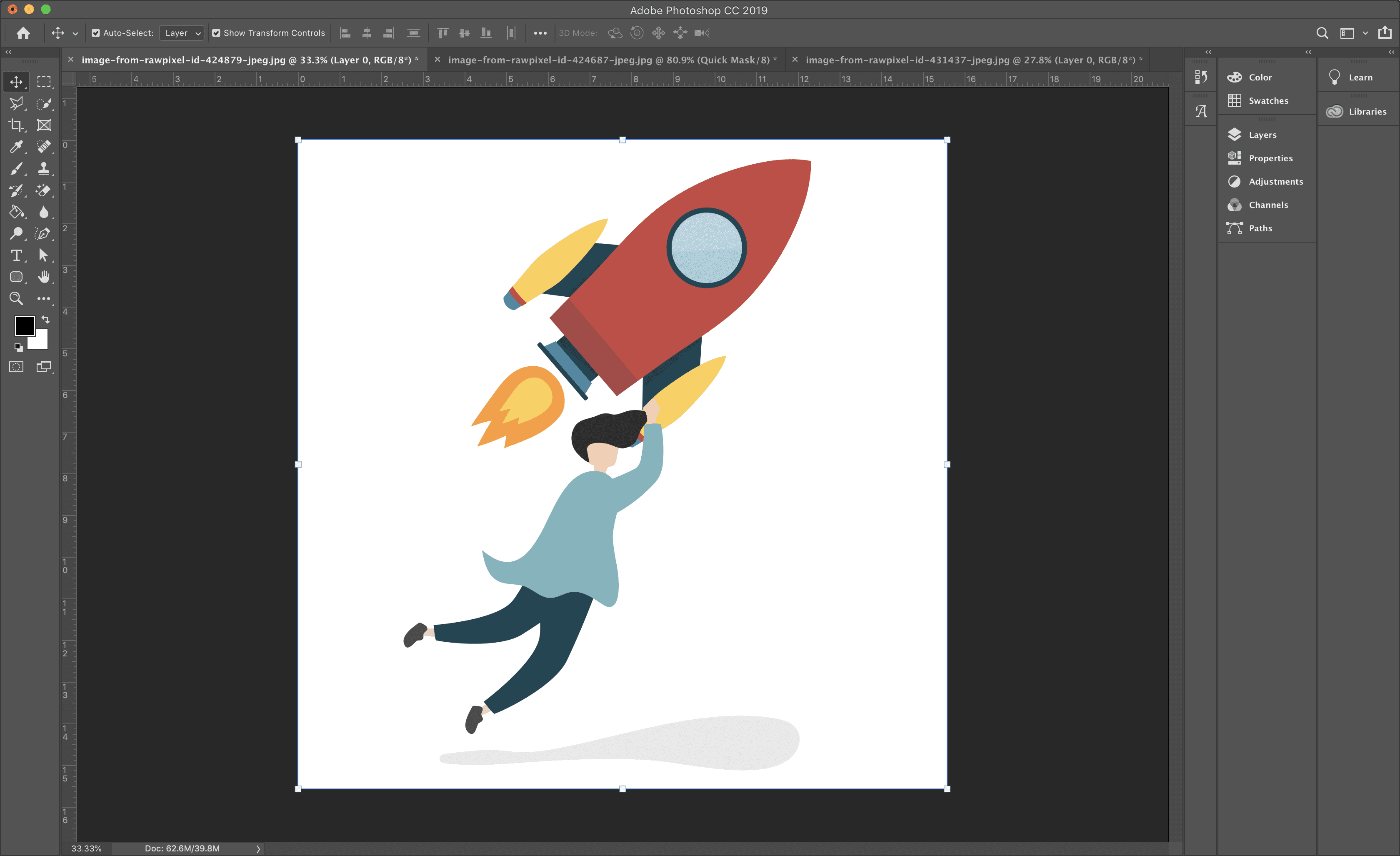
Open and middle your epitome on your dashboard
Step ii: Unlock the layer
In the layers panel, click on the lock to release it and turn into an editable layer. Rename it from "layer 0" to annihilation descriptive. Alternatively, you tin can make a new layer past duplicating the commencement and then hiding information technology by clicking on the eye. This is only in instance you make a mistake too large to ready.
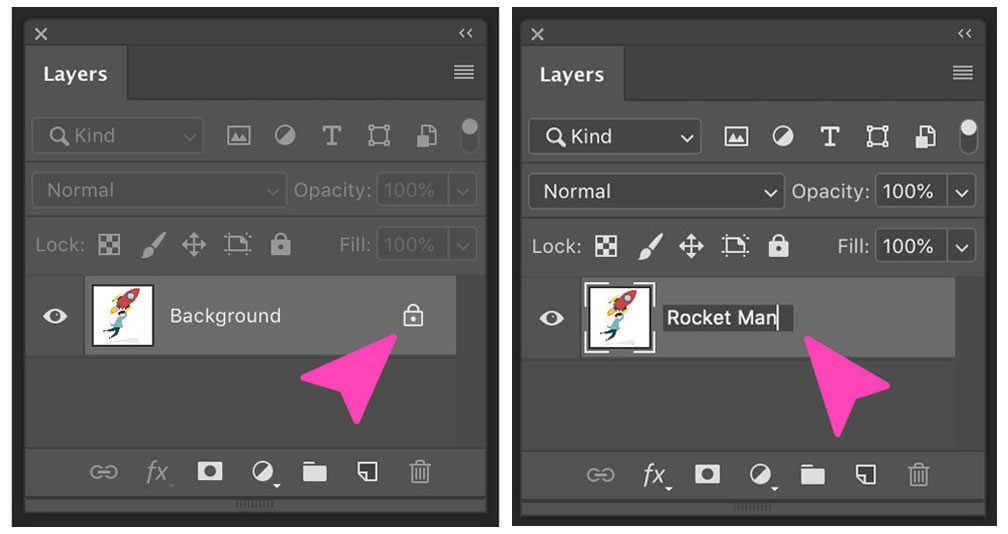
Unlock the layer and rename it
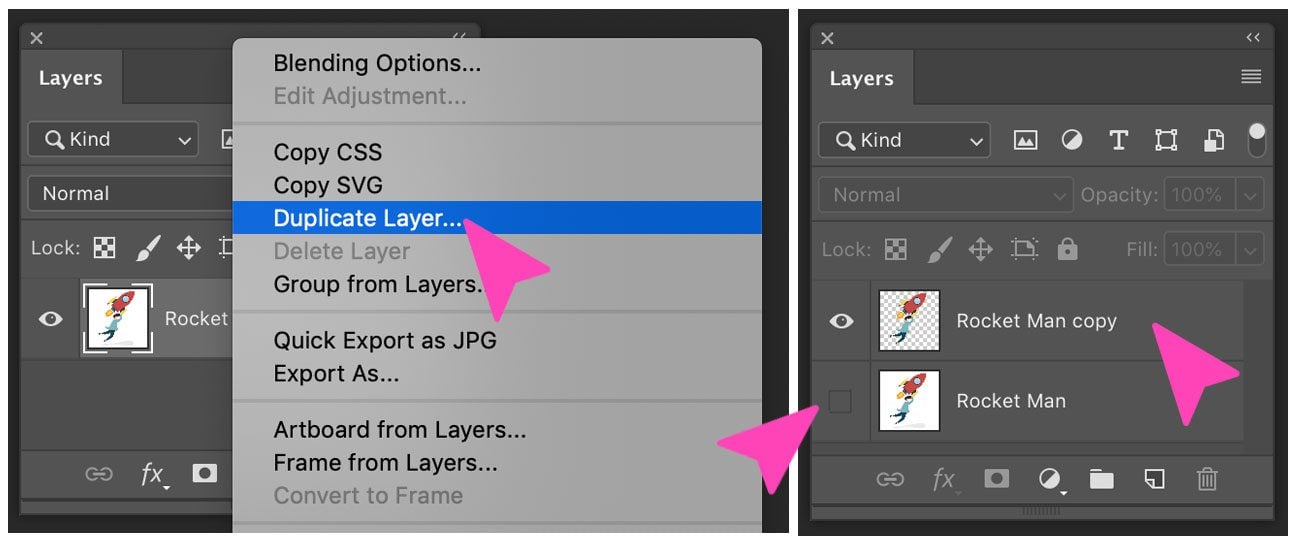
Indistinguishable, rename and hibernate the layer
Pace 3: Select the Magic Eraser tool
Select the Magic Eraser tool in the tools panel. It's the third in the eraser tab. Choose the post-obit preferences:
Tolerance: xxx
Anti-Allonym: checked
Opacity: 100%

Select the magic eraser tool
Footstep 4: Erase the background
Click on the white groundwork and watch it disappear!
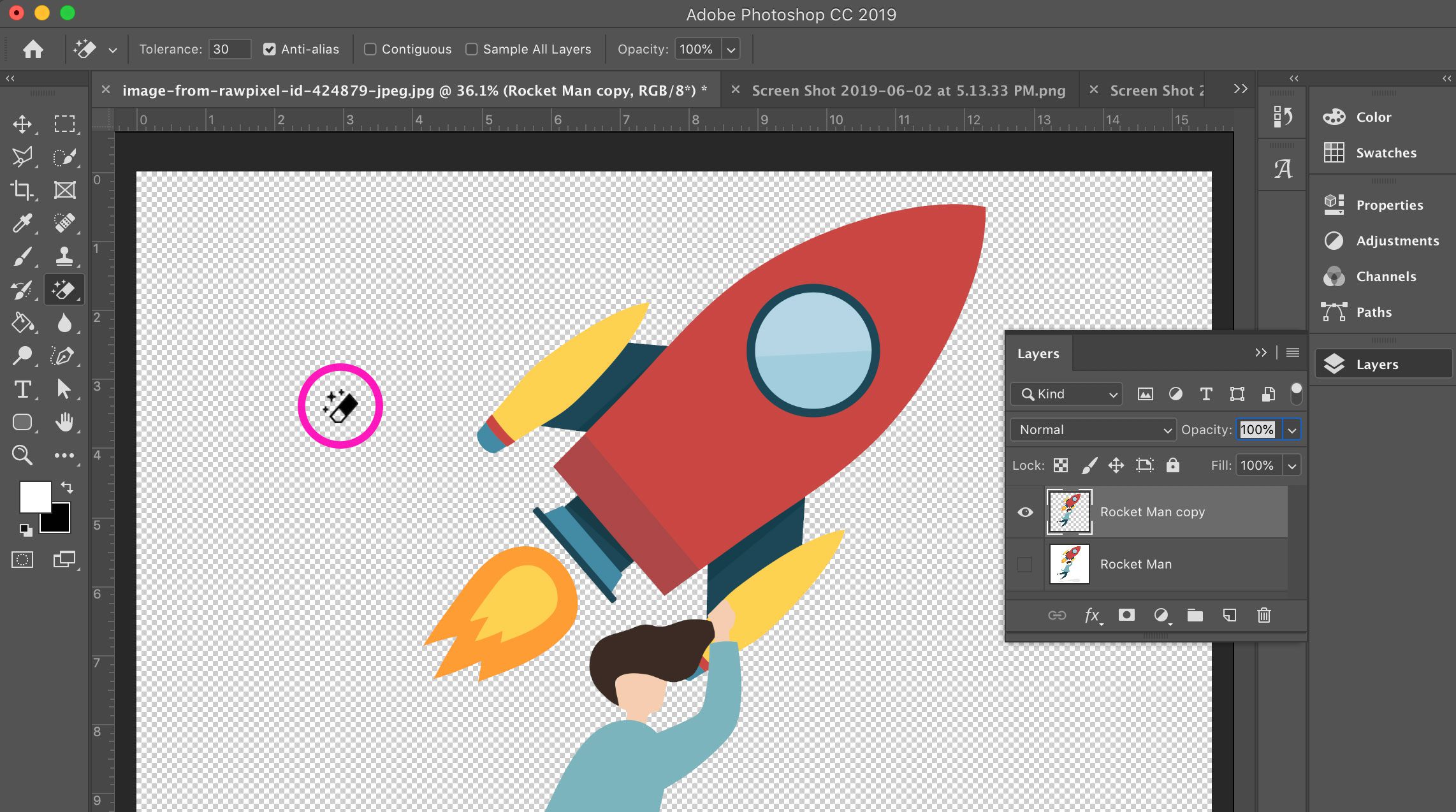
Click on the white area with the magic eraser tool selected
But wait!
Our paradigm has a grey shadow which disappears with the magic eraser. If your image has a light colored section like this, it will besides disappear. For this reason, you lot might want to endeavour the Background Eraser Tool instead.
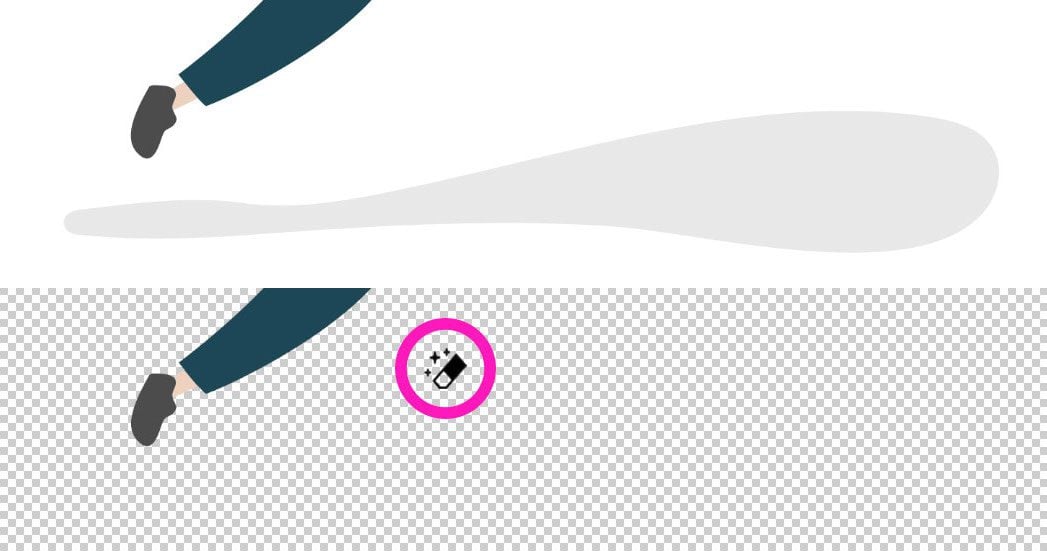
If your image has a very light area, the magic eraser might NOT be the correct tool!
Step 5: Trim and save equally PNG
Click on the trim option nether the epitome tab. This will cut off the extra transparent bits around the cutout. Export the artwork as a PNG file by clicking
Salve for Web under the file tab and choosing PNG. If y'all save as a JPEG, all your difficult piece of work volition be for goose egg as it will save with a white groundwork, PNG keeps the transparency.
![]()
Trim the prototype based on transparent pixels on all sides
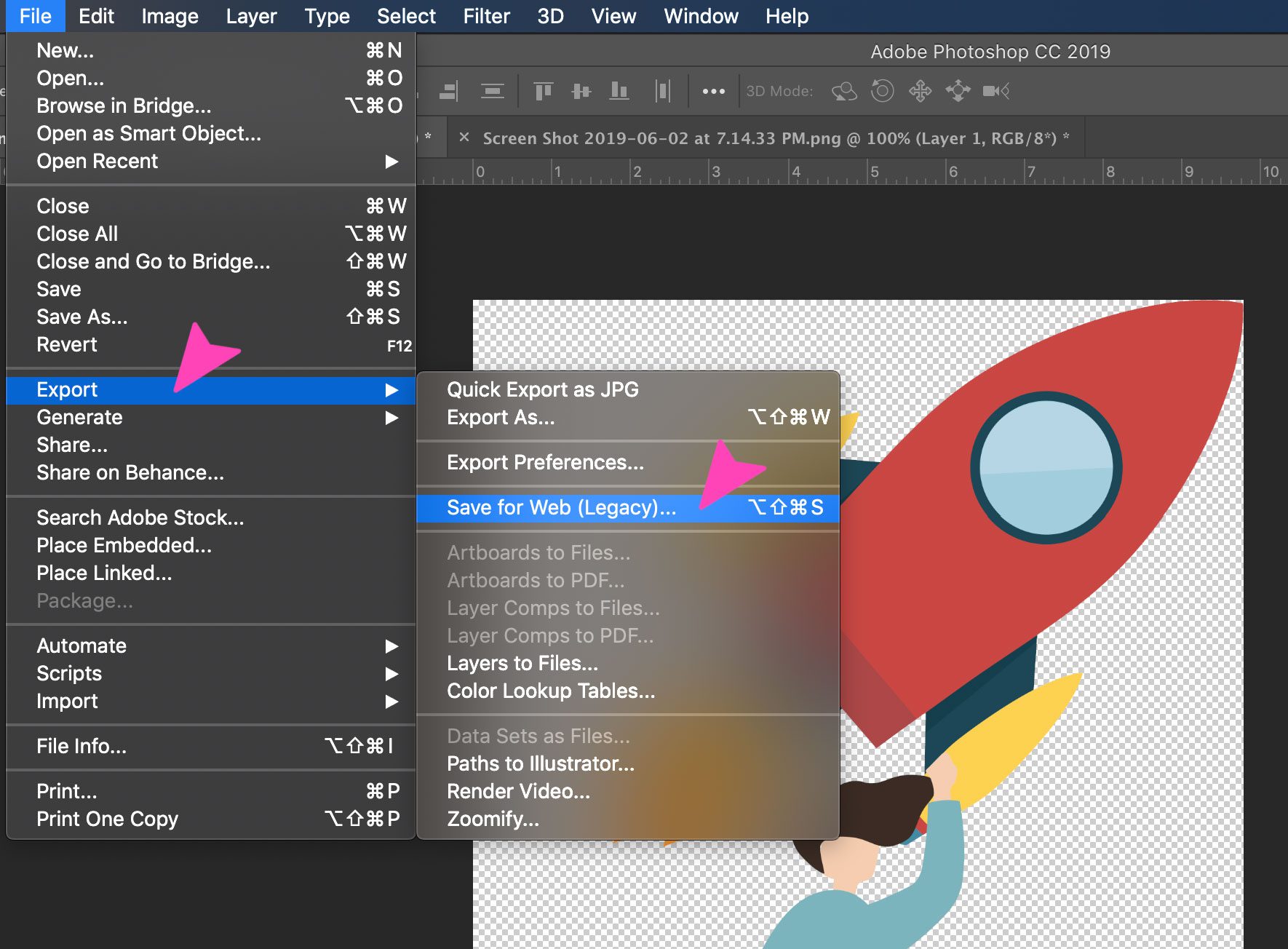
Consign and Save for Web
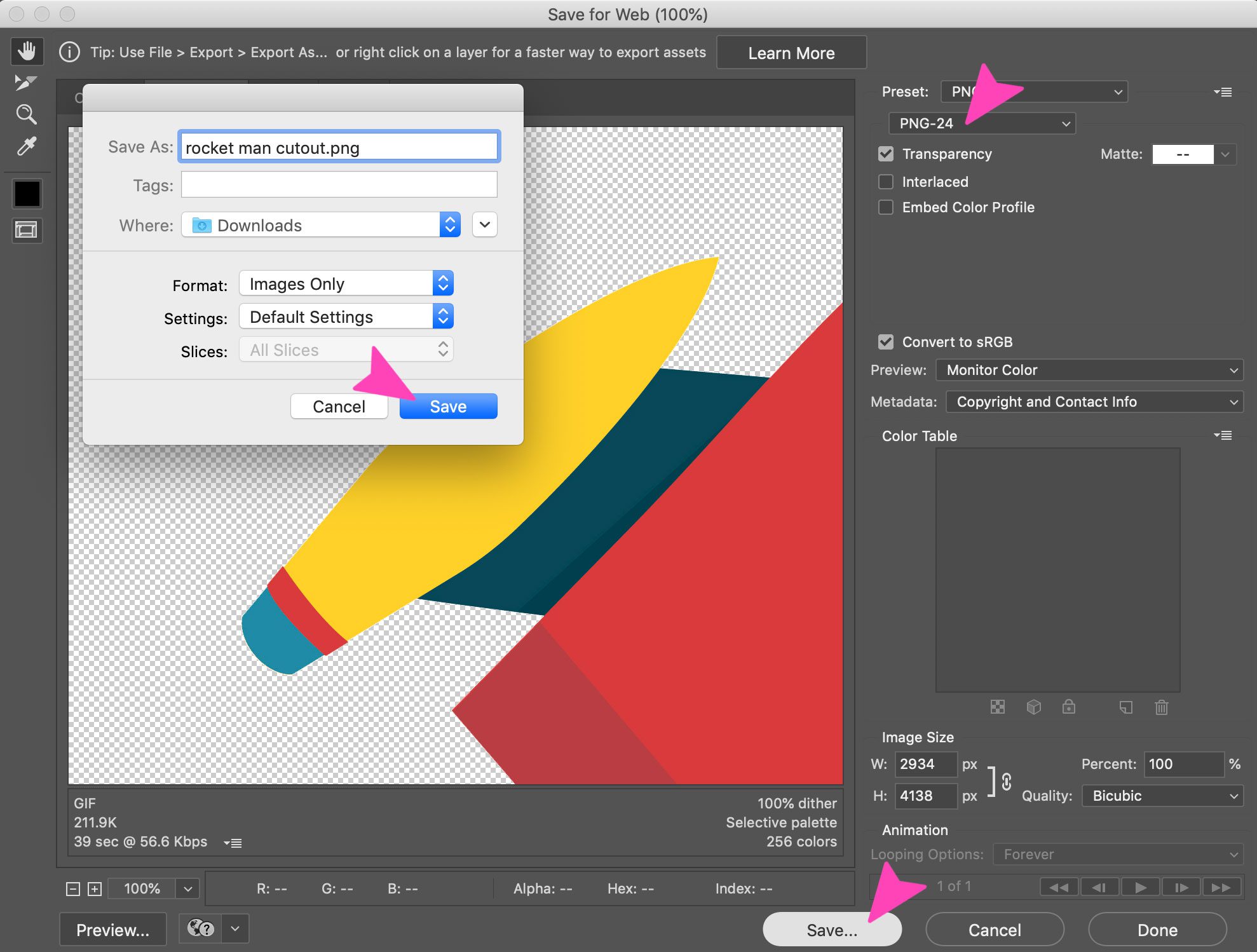
Choose the PNG option, click save at the bottom, name your file and click the blue save button
How to Remove the White Groundwork from an Image with the Background Eraser Tool
Pace 1: Repeat The Showtime Two Steps From the Magic Eraser Selection
Footstep ii: Select the Background Eraser Tool.
You tin can detect it in the eraser tab of the toolbar. The Background Eraser cursor looks like a circle with crosshairs in the eye, these crosshairs are what controls the tool. Information technology samples the colour directly beneath it, in this case, the white area.
Since we are erasing the white groundwork backside a colorful graphic, nosotros accept to choose the following preferences for the background eraser tool:
Size: 300-800 pt.
Sampling: Once or Background Swatch
Limits: Detect Edges
Tolerance: twenty%
Protect Foreground Color
Also, make certain the color blackness is in the foreground at the bottom of the toolbar.

Select the background eraser tool and the preferences
Step 3: Erase the White Background
Place the cursor over the white surface area and press the mouse button. Pressing the mouse button, drag the cursor over all the white area. Since nosotros selected 20% tolerance, the eraser will not affect other colors which are not white. If the tolerance were higher, the colors would exist affected a footling. Try different tolerance levels for different images depending on the color of your chief graphic. If you observe that you have some white pixels left over, just erase them with the normal eraser carefully.

Move the cursor with the crosshairs around the background until you have erased it all.
Step 4: Echo the last two steps of the Magic Eraser pick above
How to Remove Any Background from an Prototype with the Quick Pick Tool
A white background is not always perfectly white, sometimes information technology'due south cloudy or with darker edges. For this kind of white groundwork, you need a different tool and technique. I which you take more than control over than the eraser tools. Coming up, the quick selection tool. For this tool, we chose an image with a background that isn't perfectly white. If you would similar to follow forth with this tutorial, you lot can get the paradigm here for free in Rawpixel.
Footstep 1: Open the prototype
Select the image from your computer and open it on Photoshop. Centre the graphic in the artboard.

Open the image and center it on your Photoshop artboard
Step 2: Duplicate the layer
Unlock and indistinguishable the image layer and hide the first one, keeping it below the ane you will exist working on. This layer with the original image is a prophylactic net just in case you make a fault while erasing the background. Name the layers with descriptive names and so you know which is which. Check the screenshot on stride 2 of Removing the white background with the Magic Eraser tool if you aren't sure how to do this.
Step 3: Choose the Quick Selection tool
Select the Quick Selection tool from the toolbar. It'due south housed together with the Magic Wand tool. Adjust the preferences for the cursor similar this:
New Selection
Size: 100 px
Hardness: 100%
Spacing: twenty%
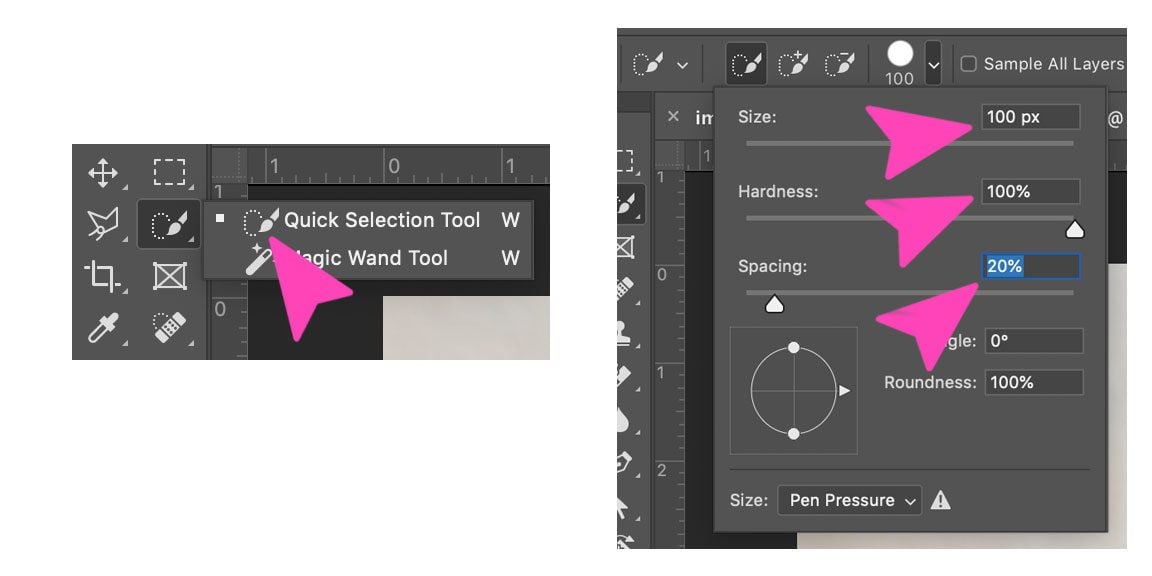
Select the Quick Selection tool and the preferences
Step iv: Select the object
Pressing the mouse push, drag the cursor over the object you want to separate from the background. This technique selects the object instead of the groundwork in social club to have more control over the selection. This is applied when the groundwork, white or otherwise, is non even.
Keep the cursor on the object and on the within border of the selection and then that it doesn't go too far over onto the background. Once y'all allow go of the cursor, the options on the preference bar will alter, yous volition simply have the choice of adding or subtracting to and from the selection. The 'new pick' pick will disengage the option you already have.

Using the quick selection tool, drag over the entire object until it'south all selected.
Stride 5: Refine the selection
It's very probable that the selection isn't perfect, then now nosotros will refine it with the castor tool. Click q on the keyboard and the paradigm will at present show a cerise surface area. This red area is the non-selected part of your image.
Zoom into the image and choose the Brush tool (or printing b) to affect up the edges. Use white to add together to your choice (erasing the red) and black to unselect (calculation red). Reduce the brush size to have more control in tight spaces and tricky edges.
To end it upward, click q again to get rid of the red and see the pick with the dotted line. Double click on the choice and click on the feather option. Adjust the feather to 3 and click ok.
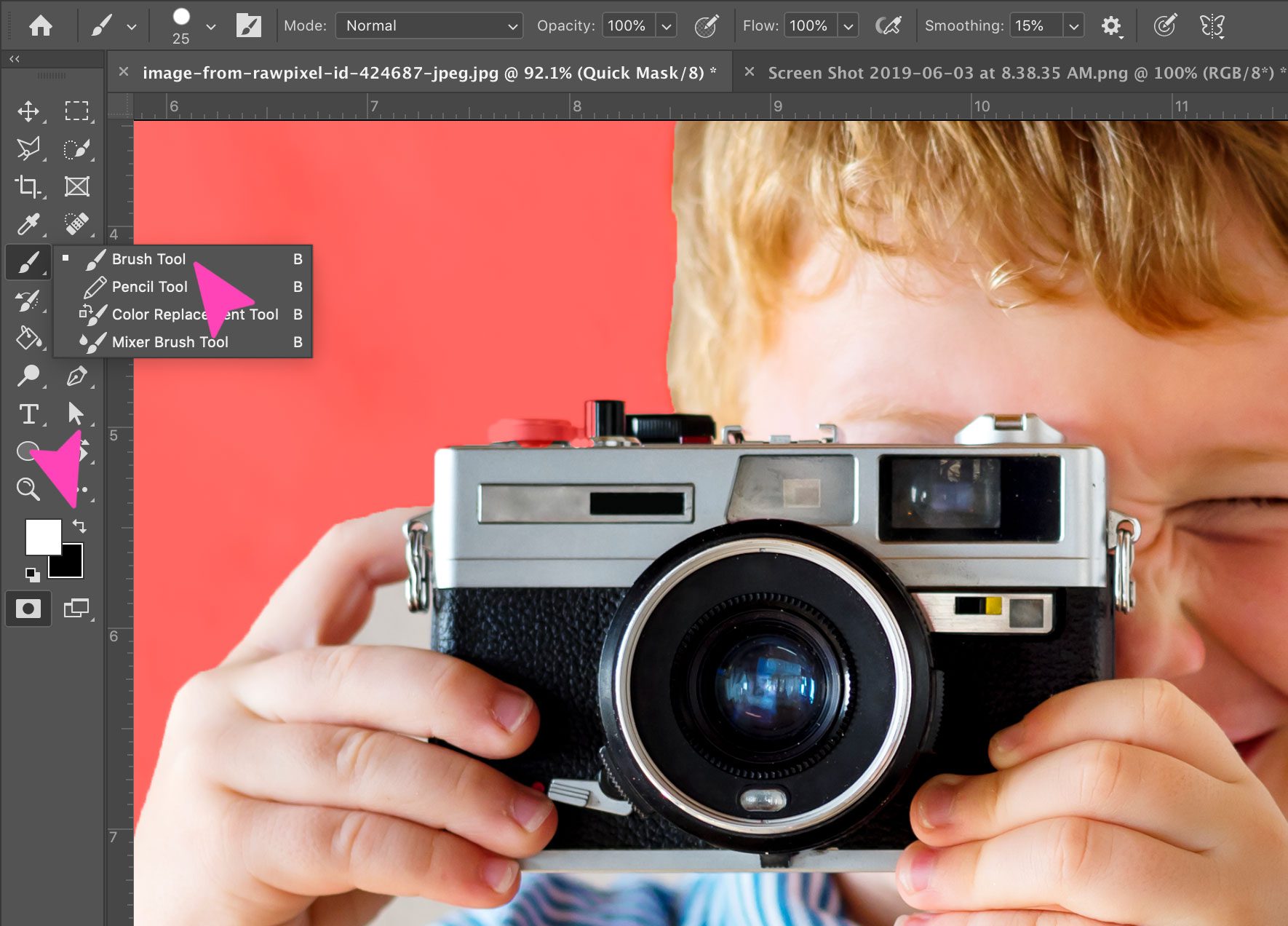
Refine the option by pressing q and using the castor tool to add or remove selected pixels
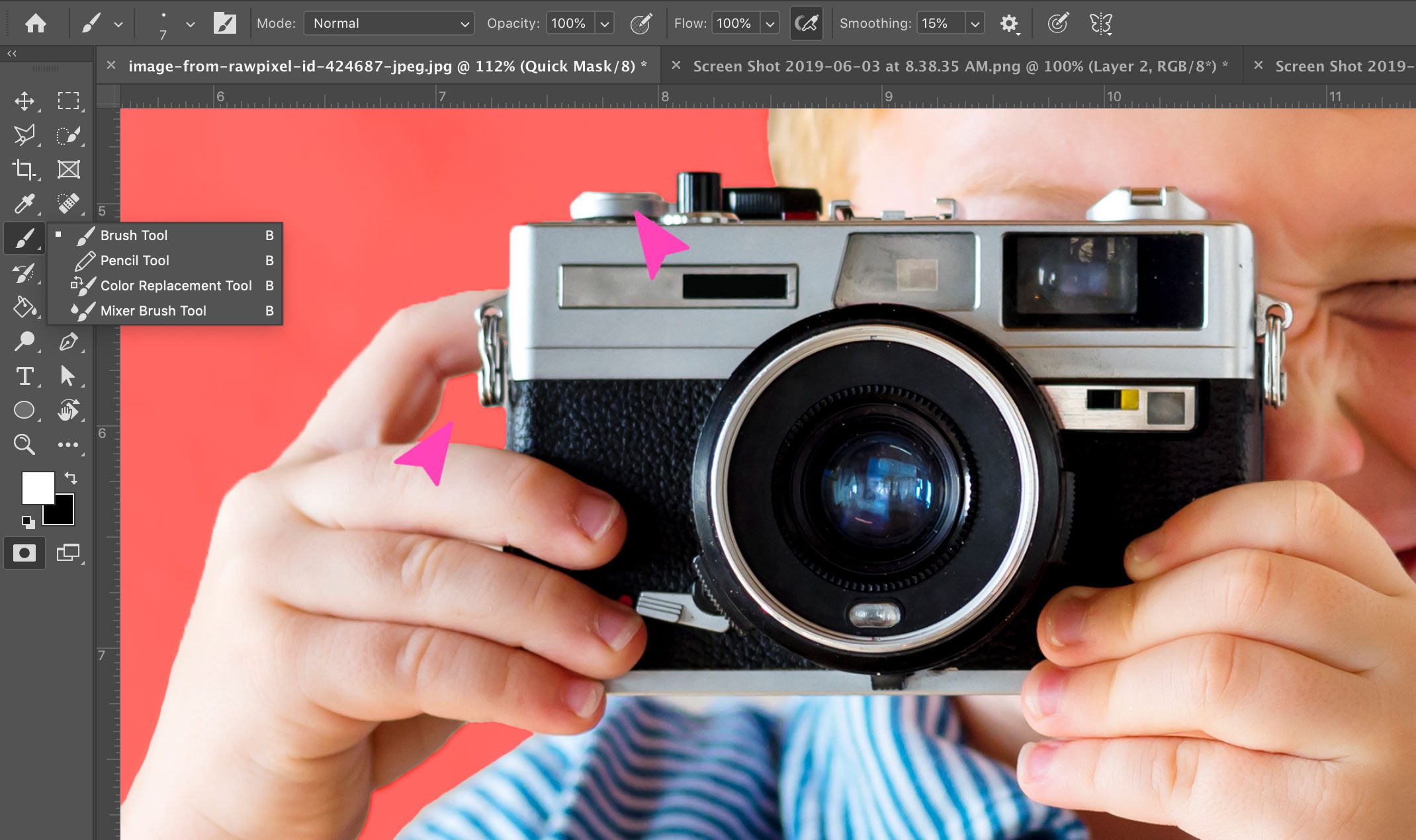
Utilise the brush with white colour to erase the crimson from the photographic camera buttons and with black to erase the background from betwixt the hand and shoulder
Footstep 6: Invert the selection
One time you are sure that the object is selected properly, invert the selection. When the background is selected, erase it and you will run into the transparency grid.
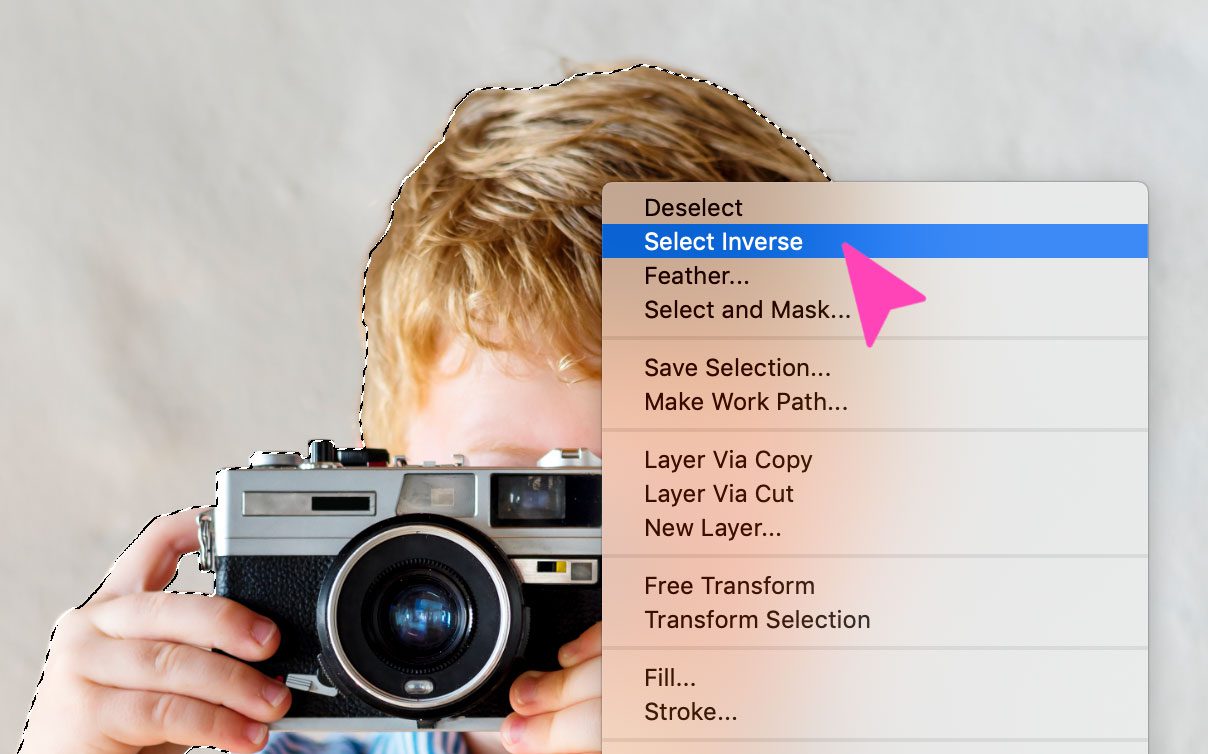
Press q to release the red, correct click on the selection then click on 'select inverse'
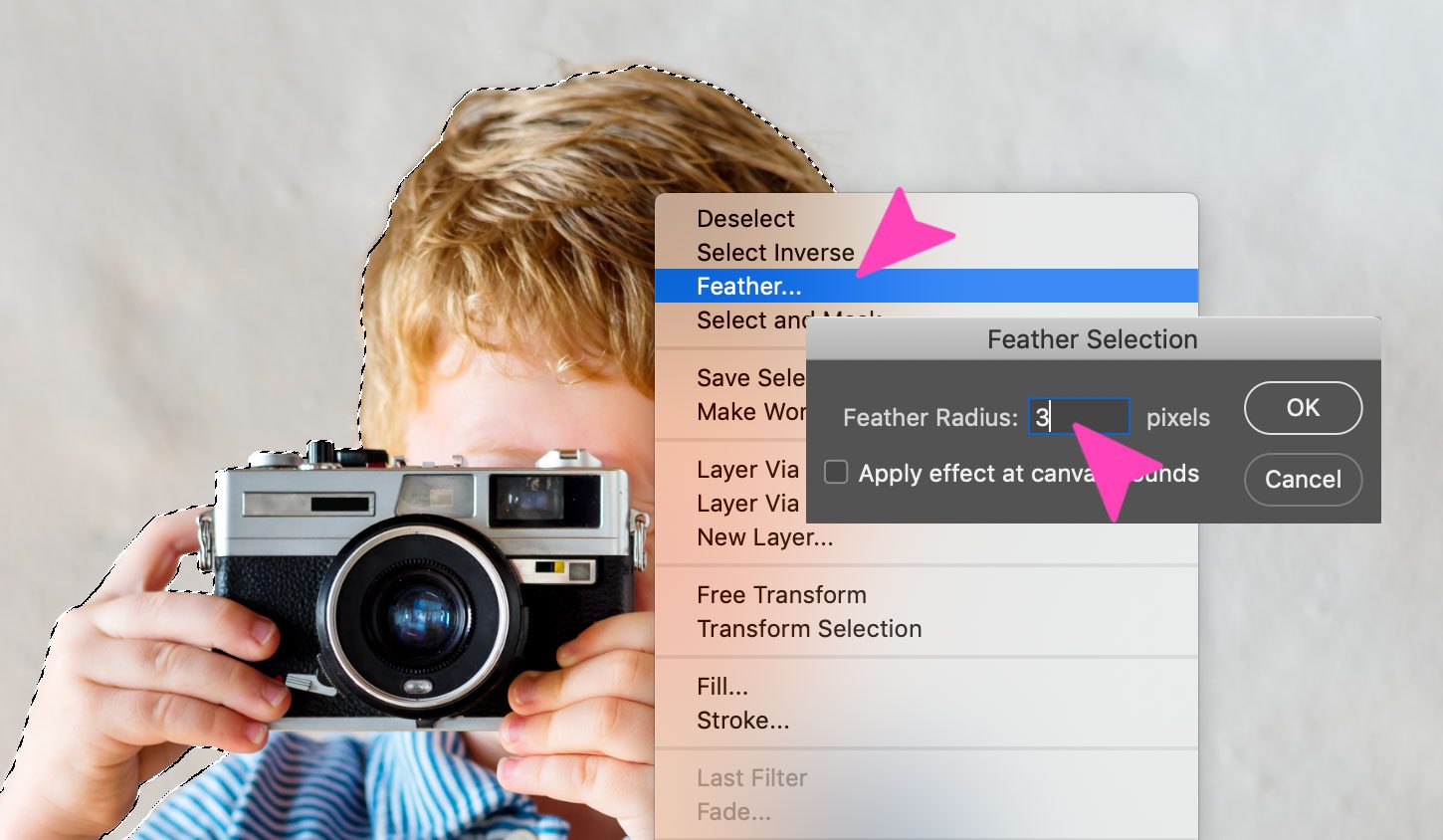
Apply a slight feather consequence to the edges of the pick
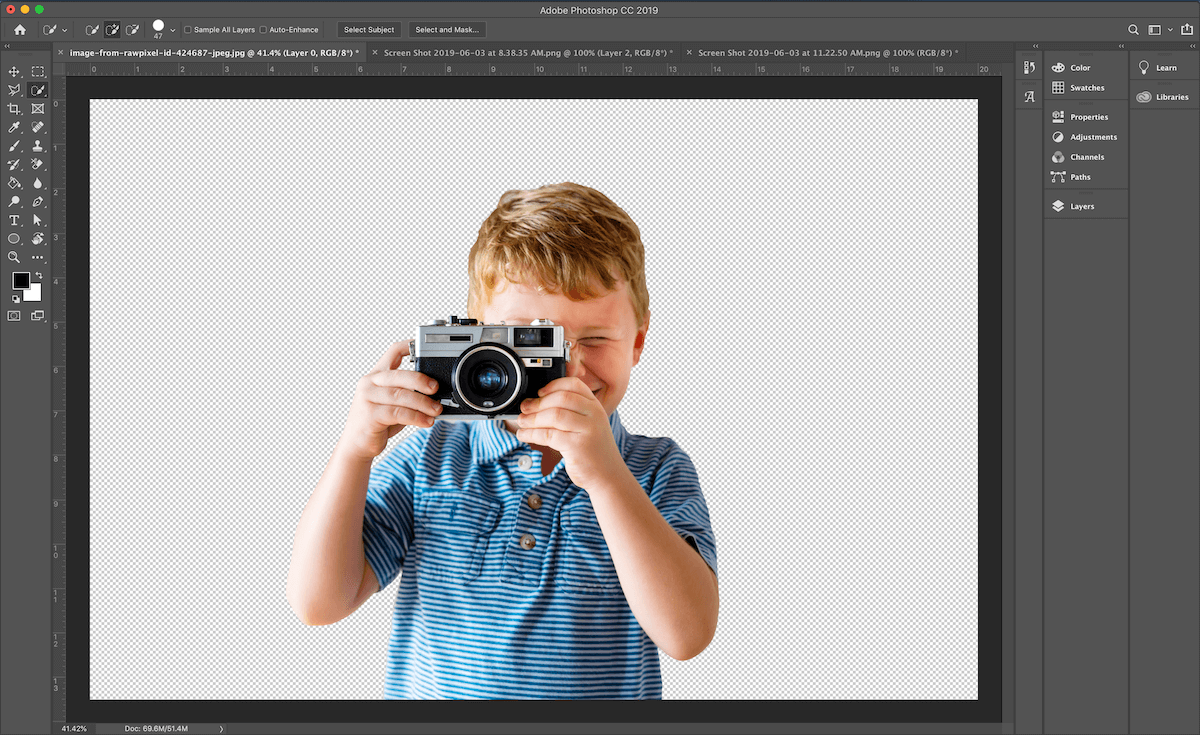
After inverting the selection, delete information technology and you volition see the transparency grid
Step 7: Echo the concluding two steps in Magic Eraser option above
Decision
Some graphic designers rely on using the lasso and pen tool to select objects from a background, but those tools are just not necessary when the background is a unproblematic white colour. With the three tools we have shown you in this guide, you have more than enough information to erase any kind of white background. Remember you can download graphics with a transparent background in two different file formats, PNG and SVG. If you lot don't take the latest version of Photoshop, you lot tin can go a complimentary trial via the Adobe Creative Deject website.
How To White Out Background In Photoshop,
Source: https://www.elegantthemes.com/blog/design/how-to-remove-the-white-background-from-an-image-to-make-it-transparent-in-photoshop
Posted by: fowlerproder.blogspot.com


0 Response to "How To White Out Background In Photoshop"
Post a Comment